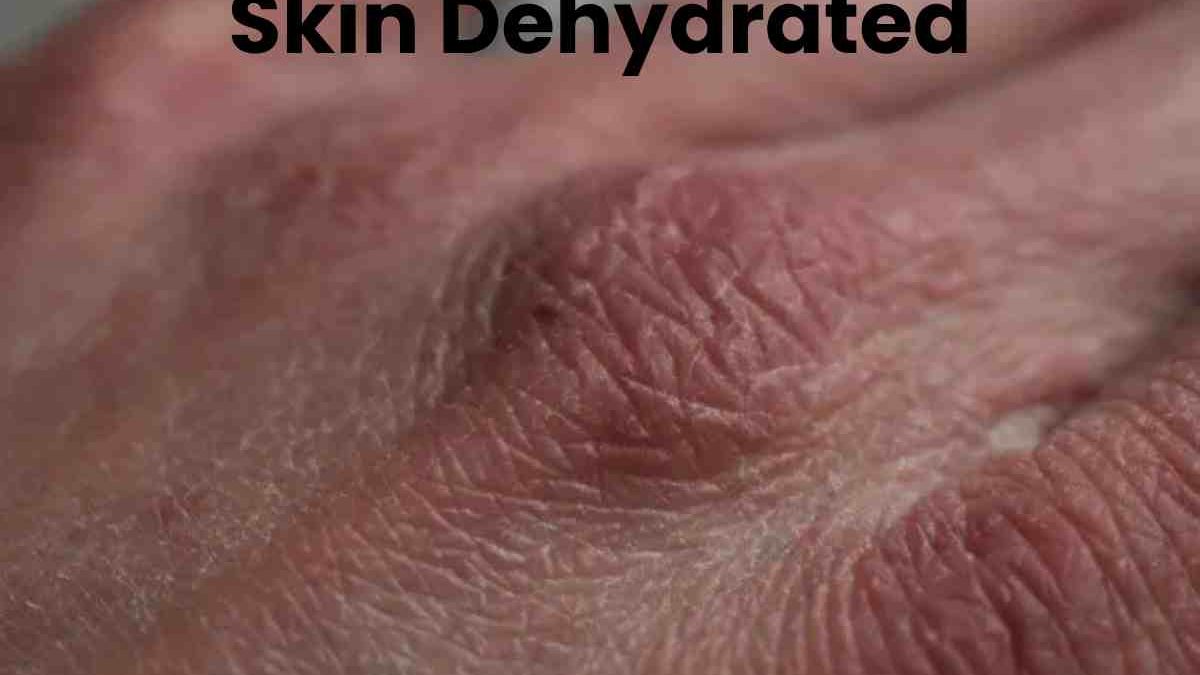Skin Dehydrated: Any skin type, whether dry, oily, or mixture, can have problems with dehydration. The things may be more or less visible, but this water shortage causes the skin on your face and some or all of your body to feel uncomfortable, especially after bathing or showering. Although similar signs, dehydrated skin should not be confused with dry skin. These are two different skin problems.
Table of Contents
What are the signs of dehydrated skin?

Dehydrated skin appears to lack radiance and comfort with intense, persistent tightness. The skin feels itchy, especially after washing and also has scales. However, it is an uncommon, temporary state that is not necessarily related to a “dry” skin type. Instead, it means oily skin can have times when it is dehydrated.
What causes skin dehydration?
- Water, just like air, is an element crucial to life.
- Water accounts for about 65% of an adult’s total body weight.
- Thus, a person evaluating 70 kg remains composed of about 49 litres of water, 15% focused on the skin.
Water plays an essential part in the skin. The skin is a reservoir that other structures tap into. It facilitates exchanges with the exterior atmosphere: water moves from the dermis to the superficial by impregnating the various layers by diffusion.
This flow of liquid is called Transepidermal Water Loss (TEWL). Naturally threatened by a hydrolipidic film on its surface, the horny layer (outer layer of the epidermis) curbs this evaporation process.
If this physiological wall is impaired, TEWL speeds up, thus creating the skin dry. As a result, water in the dermis no longer mixes with the skin; the hydrolipidic film stops functioning correctly.
All sorts of factors can cause dehydrated Environmental factors
Cold, winter, wind, pollution, UV rays, etc.;
Smoking
External factors
Such as tobacco or alcohol;
Stress
Emotional factors
Stress or fatigue
Pills
Certain medical treatments
Such as anti-acne or anti-cholesterol medications
Essential oils
Cosmetic products that are too aggressive, cleanser, stripping or drying ratio
How is water regulated in the skin?
The skin is susceptible to water lack, which has a hydro regulation mechanism.
1) Skin hydro regulation
The skin is 70% water. Nearly 75% is situated deep down in the dermis, which plays a vital role in the skin’s resistance.
2 elements moisturize the epidermis:
Static water, which remains fixed, and dynamic water, which circulates.
Hydroregulation achieves stability between these two aqueous types of machinery, and it alone guarantees the skin’s physical and valuable integrity. Three main factors contribute to hydro regulation: NMFs (Natural Moisturizing Factors), lipids in the horny layer and aquaporins.
2) NMFs (Natural Moisturizing Factors), hydro regulation factors
NMFs are molecules that can muddle water within the horny layer, called humectants. The most commonly known NMFs are urea and lactic acid. Other makeup substances have the same properties; these include glycerine and xylitol.
Conclusion
If you want your layer to look and feel its best, you need to both hydrate and moisturize. However, those with dehydrated skin may be able to skip moisturizers, while dry skin types may find their skin getting worse by only hydrating.
If you’re hydrating and moisturizing, use hydrating ingredients first and then take the necessary steps to seal that moisture.
Also read : Coconut Body Scrub – How to Make it?

